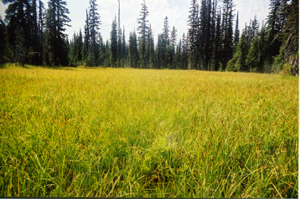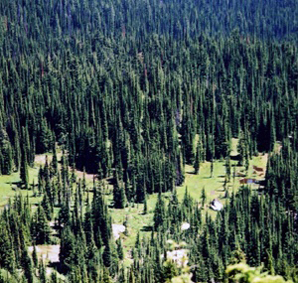In 2006, the BLM issued a Resource Management Plan and Environmental Impact Statement, asking for comments to preserve lands east of Grandmother Mountain. In 2007, the BLM selected Pinchot Marsh and Lund Creek as a RNA/ACEC. The agency left out Breezy Saddle, Lookout Mountain, Crater Peak, and Long Hike Peak in their selection. In an Area of Critical Environmental Concern, special management attention is required to protect and prevent irreparable damage to important historic, cultural or scenic values, fish and wildlife resources, or other natural systems and processes. Note, national forest lands overlap with the two areas below.

Pinchot Marsh is located south of Orphan Point on Road 301 out of Clarkia, Idaho. The marsh is approximately 40 acres in size, and at an elevation of 5,440 feet. It consists of small, slow-moving streams draining the marsh to form Pinchot Creek, which eventually joins Floodwood Creek to the south. Sedges dominate the vegetation, with an understory of sphagnum moss. Long-tailed salamanders and spotted frogs, together with several species of macroinvertebrates, are located here.

The upper-reach of Lund Creek is within the ACEC. The lower-reach crosses National Forest lands before merging with the Little North Fork Clearwater River. Spawning and rearing success for bull trout and Westslope-cutthroat trout occur in Lund Creek. Subalpine peatlands (bogs and marshes) containing a mix of plant species common to western mountain systems come together with taxa typical of boreal habitats in the far north. Widow Mountain forms a backdrop to the entire drainage.
Friends of the Cleawater and Dr. Fred Rabe have submitted a proposal to the Idaho Panhandle National Forests to protect 49 Meadows as a Research Natural Area. Learn more.